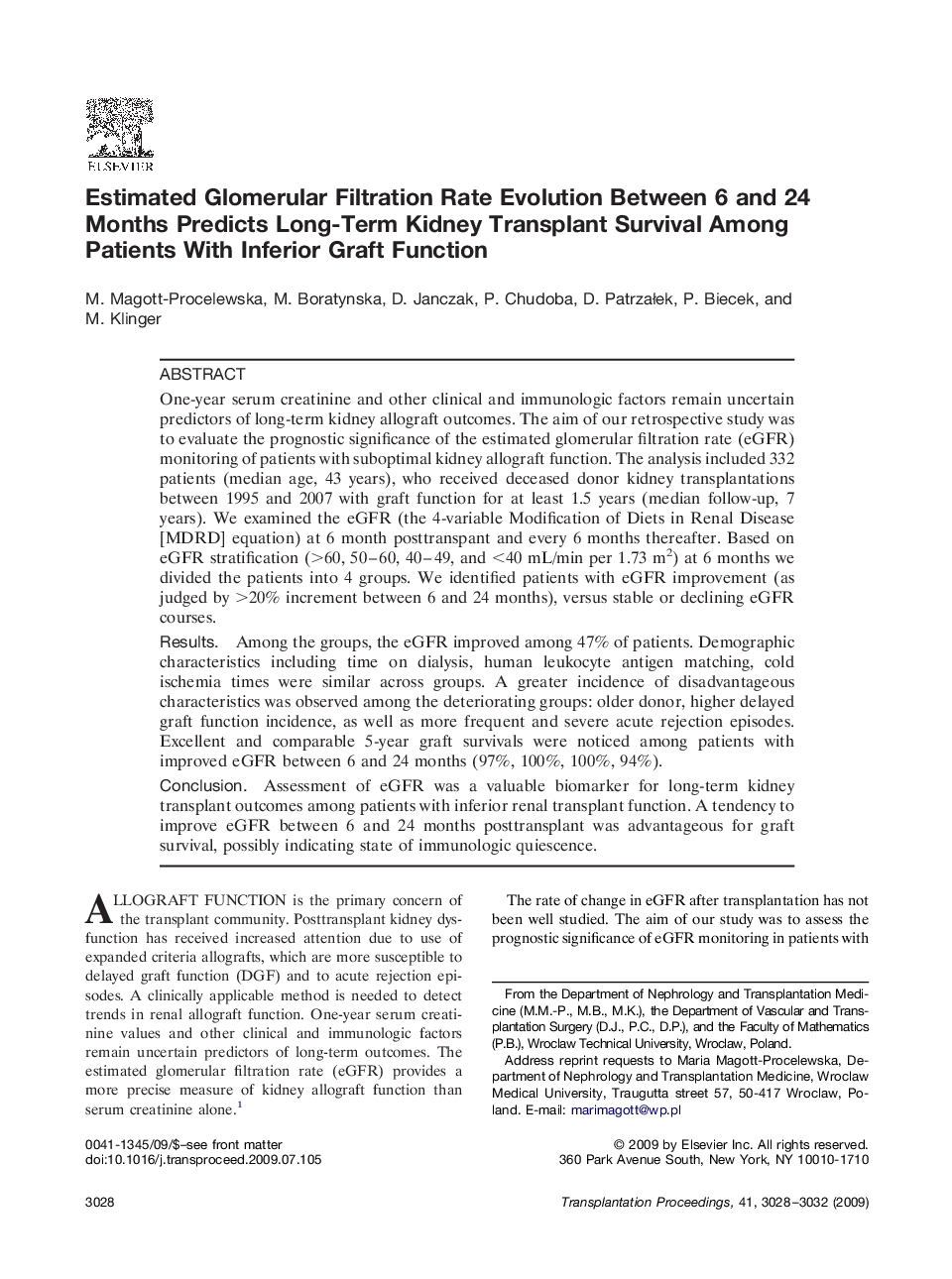| کد مقاله | کد نشریه | سال انتشار | مقاله انگلیسی | نسخه تمام متن |
|---|---|---|---|---|
| 4258980 | 1284565 | 2009 | 5 صفحه PDF | دانلود رایگان |

One-year serum creatinine and other clinical and immunologic factors remain uncertain predictors of long-term kidney allograft outcomes. The aim of our retrospective study was to evaluate the prognostic significance of the estimated glomerular filtration rate (eGFR) monitoring of patients with suboptimal kidney allograft function. The analysis included 332 patients (median age, 43 years), who received deceased donor kidney transplantations between 1995 and 2007 with graft function for at least 1.5 years (median follow-up, 7 years). We examined the eGFR (the 4-variable Modification of Diets in Renal Disease [MDRD] equation) at 6 month posttranspant and every 6 months thereafter. Based on eGFR stratification (>60, 50–60, 40–49, and <40 mL/min per 1.73 m2) at 6 months we divided the patients into 4 groups. We identified patients with eGFR improvement (as judged by >20% increment between 6 and 24 months), versus stable or declining eGFR courses.ResultsAmong the groups, the eGFR improved among 47% of patients. Demographic characteristics including time on dialysis, human leukocyte antigen matching, cold ischemia times were similar across groups. A greater incidence of disadvantageous characteristics was observed among the deteriorating groups: older donor, higher delayed graft function incidence, as well as more frequent and severe acute rejection episodes. Excellent and comparable 5-year graft survivals were noticed among patients with improved eGFR between 6 and 24 months (97%, 100%, 100%, 94%).ConclusionAssessment of eGFR was a valuable biomarker for long-term kidney transplant outcomes among patients with inferior renal transplant function. A tendency to improve eGFR between 6 and 24 months posttransplant was advantageous for graft survival, possibly indicating state of immunologic quiescence.
Journal: Transplantation Proceedings - Volume 41, Issue 8, October 2009, Pages 3028–3032